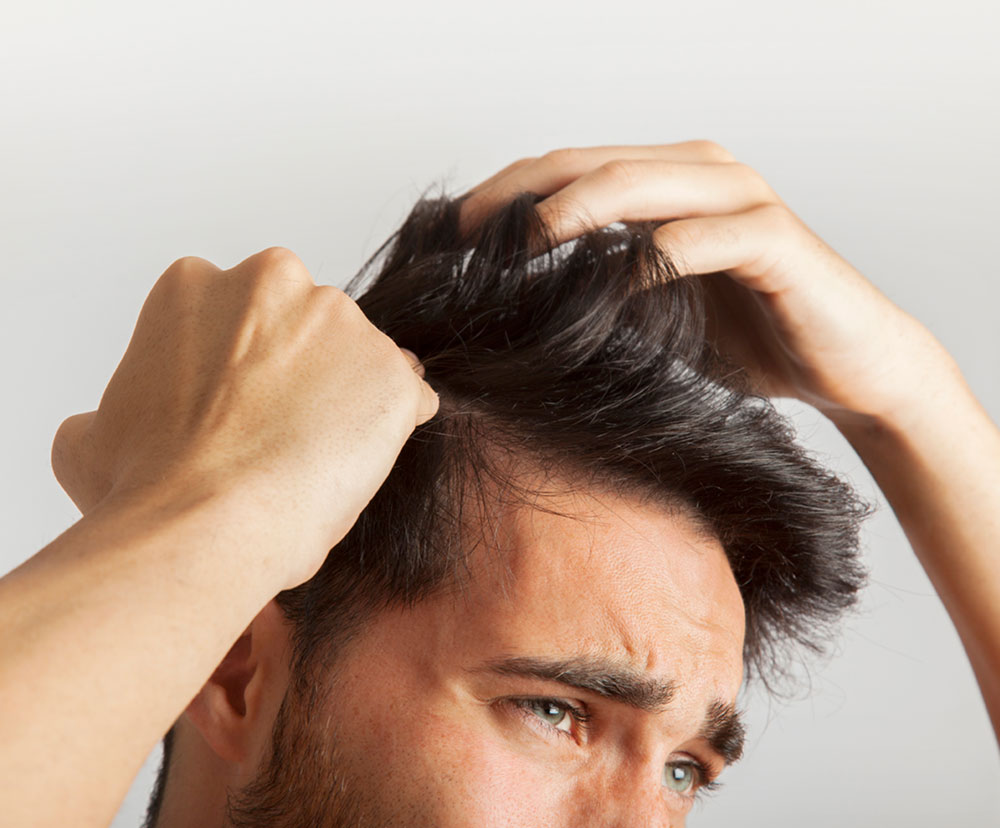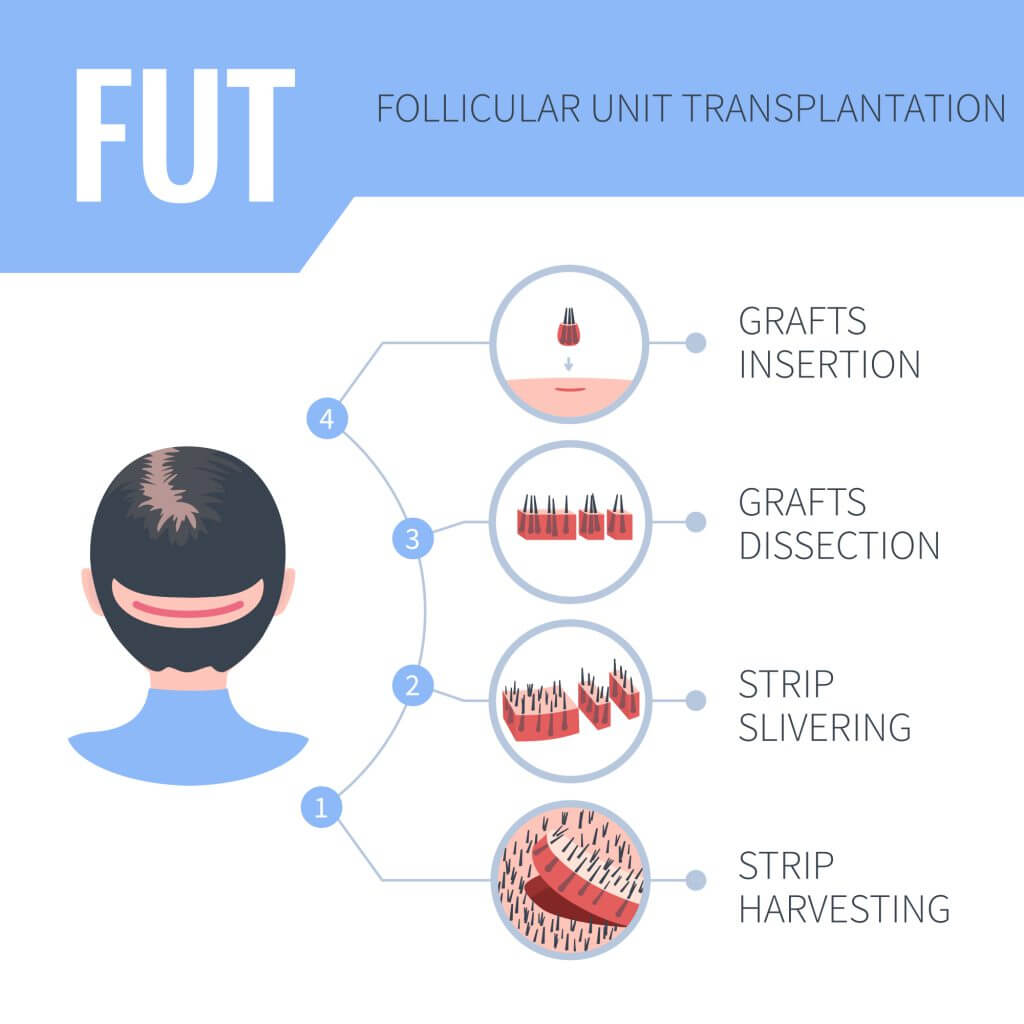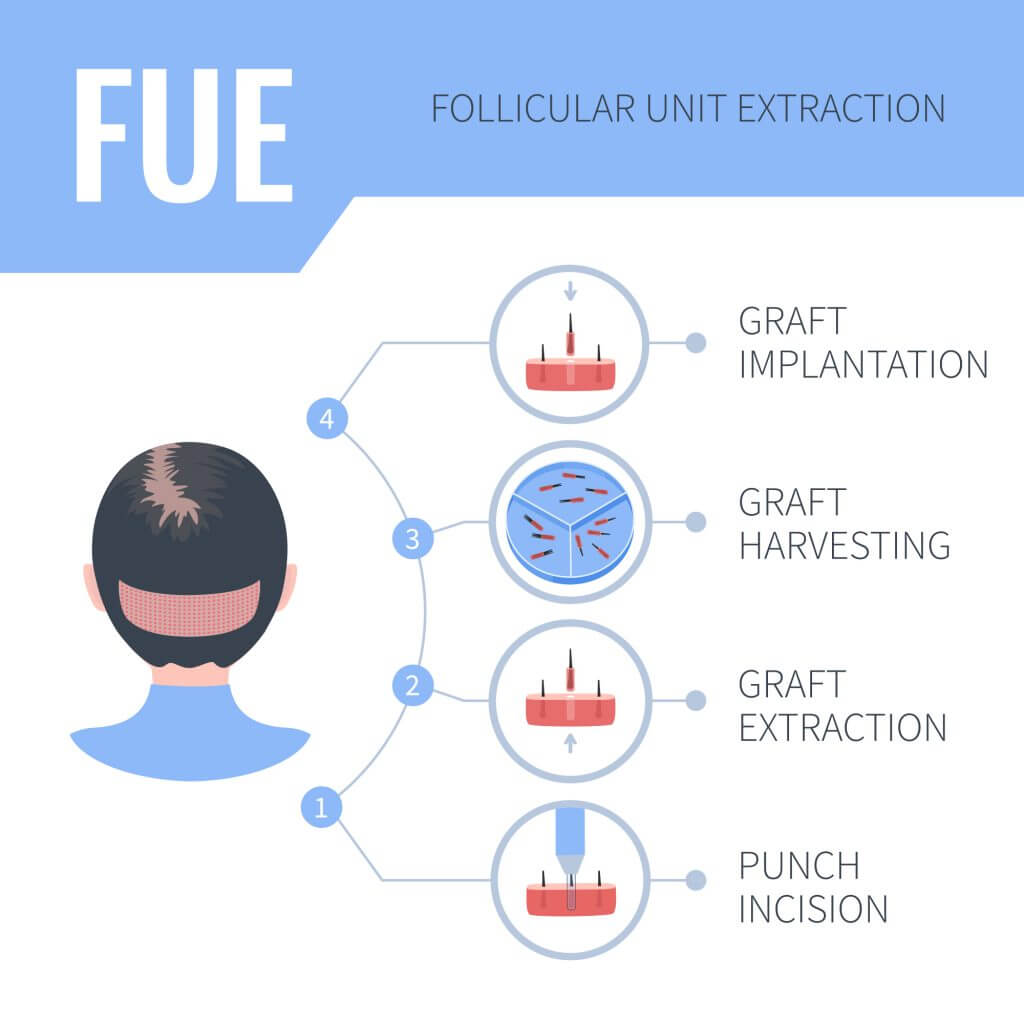
Hair Transplantation in Thessaloniki - Athens
Loss of hair follicles from the scalp, eyebrows or beard area is a complex pathological condition that can adversely affect the quality of life in both men and women. The specialized team of DermAestheticsHair, which consists of dermatologists with many years of experience in hair transplantation (hair transplantation and hair restoration surgery), is here to diagnose the patient through trichoscopy and then choose the method of transplantation that will give a natural result and will best suit his needs.
Hair Transplantation Techniques
Until recently, the available methods that were applied worldwide were FUT (Follicular Unit Transplantation), FUE (Follicular Unit Extraction), as well as the variants of these methods, which do not differ substantially from each other, and their existence serves mainly promotional purposes. These methods are based on extracting an entire hair follicle from the donor site and transplanting it to the recipient.
HST (PL-FUE)
hair transplant method
FUE
hair transplant method
FUT
hair transplant method
HST (PL-FUE) HAIR TRANSPLANTATION METHOD
At our Hair Clinic we offer the hair transplantation method HST (PL-FUE ), which is applied abroad and exclusively in our clinic, for Greece and Cyprus.
HST Hair Transplantation Method
Partial Longitudinal FUE
The PL-FUE method (Partial longitudinal-FUE), which is applied in selected hair follicle transplant centers worldwide and in our center exclusively nationwide, is performed using special micro-tools, which enable the partial removal of the hair follicle. The hair follicle gets intersected along its stem and thus, the hair of the donor area, is divided into 2 elongated sections, one of which remains in the donor area and the other is transplanted to the recipient area. Thus, with the PL-FUE method, two new hairs are created from one hair of the donor area and these two hairs continue to grow normally. With this method there is no visible difference in the density of the hair in the donor area, as well as no scar marks. In the meantime, the implants are strengthened with the help of special growth factors contained in a solution, the composition of which is protected by a patent of the European Union.

FUT Hair Transplantation Method
The FUT method produces hair follicles after processing the skin tissue obtained from the donor site. It allows you to get an increased number of hair follicles to cover extensive areas suffering from alopecia.
It does not require shaving of the donor area and can be repeated if the area to be covered is large. With the special stapling techniques we use, as well as the use of special medical preparations, the healing in the donor area leaves practically no visible scar.

FUE Hair Transplantation Method
The FUE method produces original hair follicle units, using special equipment of circular incision of the skin, of maximum diameter 0.8mm. The holes created in the donor area heal, leaving a tiny scar. Shaving the donor area is often necessary. It is an ideal method for covering limited areas of alopecia.
Both methods, if applied by specialized medical personnel, do not produce visible marks in the donor area. However, both are based on the transfer of an entire hair follicle from one area to another. The hair follicles, after their collection, are kept in a special solution for preservation of transplanted organs, which we further enrich, so that the survival rate is excellent.
Hormonal Disorders and Hair Loss – Frequently Asked Questions
Men with androgenic alopecia do not have elevated androgens in their blood compared to men without alopecia. In contrast, their hair is more sensitive to the effects of androgens at the level of the hair follicle. The cells of the hair follicles on a scalp with alopecia contain significantly more androgen receptors than those found in parts of the scalp where hair is preserved. Therefore, hormonal tests are usually not recommended for men with signs of androgenic alopecia.
Most men will experience a slightly receding hairline on the temples after puberty. Women can also experience hair changes with the frontal hairline receding, without the corresponding opening of the temples. These can be characterized as signs of maturation or aging and not necessarily as an indication of androgenic alopecia.
A straight hairline like the one seen in young children is rare among adults.
No, this does not contribute to baldness. However, sebum production is caused by the stimulation of the sebaceous glands by androgens, so people with baldness, who are characterized by increased androgen metabolism can also produce a lot of sebum and have seborrhea.
Choosing the right transplantation method
How is hair loss diagnosed?

Fotofinder Tricholab
Hair implantation in the recipient area
The second stage of a hair transplant, which is the implantation of the hair follicles in the recipient area, is the most important for the creation of a natural result in hair transplants. To achieve this goal, it is crucial to place a sufficient number of hair follicles with the right – natural – angle and direction.
However, in order to maintain the initial proper implantation, tissue injury and subsequent inflammation must be limited, if not non-existent. To achieve this we use non-traumatic socket-making tools made of sapphire, which reduce injury to a minimum and give greater accuracy in creating the angle of implantation as well as local anesthesia. The use of a special implanter, although it reduces the time of the operation, is avoided, as this tool is made of plastic and metal and the precision it offers, in combination with the injury it causes, prevents the creation of a natural result and dense hair growth.
Hair Transplant – Frequently Asked Questions
In male hair loss, the first signs of male pattern baldness include a receding hairline on the temples and thinning at the top of the scalp.
In female hair loss, the first sign of female baldness is the progressive central thinning of the hair on the upper part of the head. Women may also complain that their hair parting line is becoming wider.
Hair loss can be due to many different causes (eg scarring alopecia, gyroid alopecia, diffuse alopecia, androgenetic alopecia, etc.). A visit to your dermatologist is the first step. He or she will take a detailed medical history, both personal and family, and perform a thorough clinical examination that will include a hair scan through trichoscopy.
In addition, the dermatologist may choose to perform some additional tests, including biopsy and blood tests, depending on the diagnosis that is suspected.
Unfortunately, no. Chemical hair tests do not seem to help diagnose the causes of hair loss. Studies have shown that there are large discrepancies in the results, even if the samples were taken from the same person.

Postoperative course to optimize results
Upon completion of the hair transplant, the doctor will give you all the necessary instructions and will prescribe the preparations you need to use. Then in the first follow up examination, after three days, the necessary actions will be taken to achieve the maximum possible result. The next follow ups are planned according to the needs of each case.
Throughout the postoperative period, a specialized team of dermatologists will be close to you to advise you and answer all your questions.
Causes of hair transplant failure
Many cases of transplants addressed to our practice have undergone failed hair transplants and / or hair transplants performed with the incorrect technique by non-specialist dermatologists and doctors of other specialties. Common causes of failure are the application of the wrong technique in receiving and implanting the grafts, but also the application of transplant methods in patients suffering from underlying inflammatory scalp disease, which is impossible to be diagnosed by a non-dermatologist, as it has the image of “hair thinning”. The devastating effects on the donor and recipient area of these patients make their aesthetic rehabilitation particularly demanding, a situation that would have been avoided if the underlying diagnosis and effective treatment of the underlying disease had preceded the hair transplantation.
The method of hair transplantation and the high training and knowledge of the pathology of the scalp by specialized dermatologists ensures the correct therapeutic approach to achieve a “natural” result.
Why should you trust DermAestheticsHair?
Hair loss in men and women is a common occurrence, which is often not treated with simple medication, hair mesotherapy or a simple hair loss treatment. Sensitivity to the scalp as well as thinning and hair loss problems can be caused by many different factors.
Choosing the method of hair transplantation, the use of the proper equipment and the process of preparation of the donor area are necessary factors for success, a result of the appropriate know-how!
The hair transplantation at the DermAestheticsHair clinic follows the most modern and painless transplant method (whether it is the fue technique or the fut technique). For the first time, in Greece and Cyprus, the PL-FUE method for transplantation is provided, exclusively by our clinic! Hair implantation at the Derm Aesthetics Hair clinic is painless and effective due to the many years of experience of Mr. Ioannidis and the trained staff.
The team of DermAestheticsHair is at your disposal, in order to inform you about the stages of the transplant, the duration of the operation, the cost of hair transplantation and hair implantation, as well as to provide you with the necessary information about the respective transplant technique.
Contact us or make an online appointment and get the new hair you want!
Our Contacts
Contact us!
Agias Sofias 28, Thessaloniki
info@dermaesthetichair.gr
(+30) 2310 282.292 & 2310 250.300

